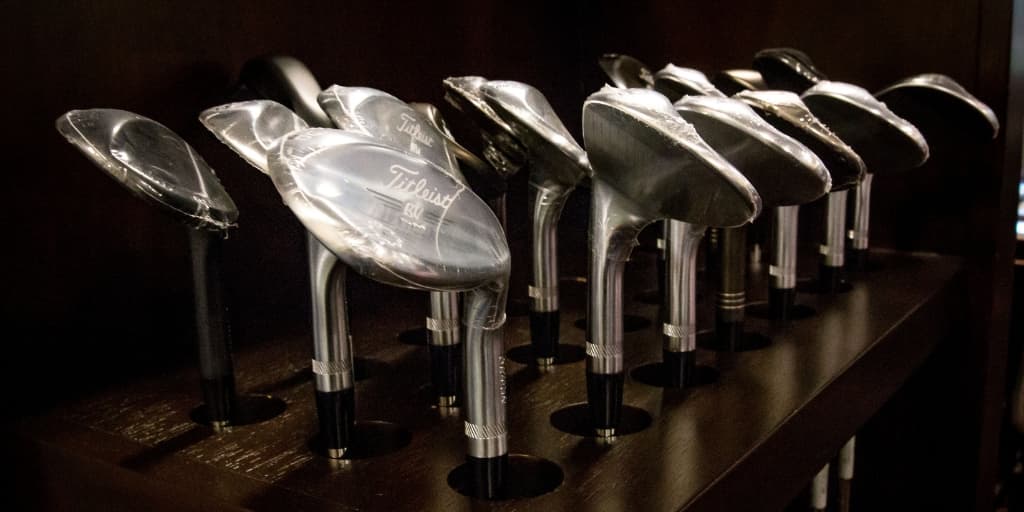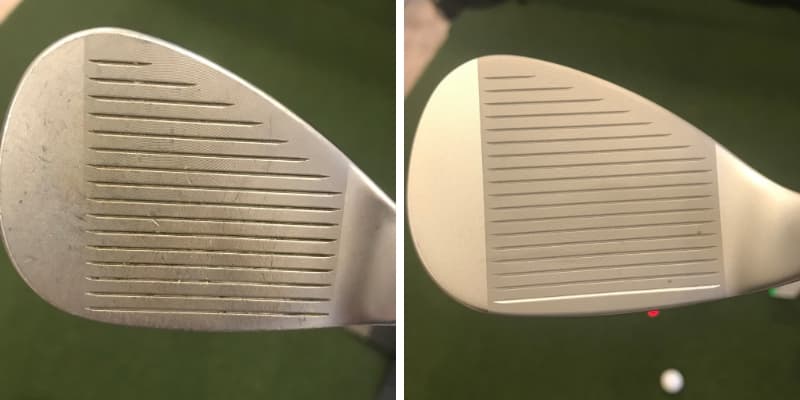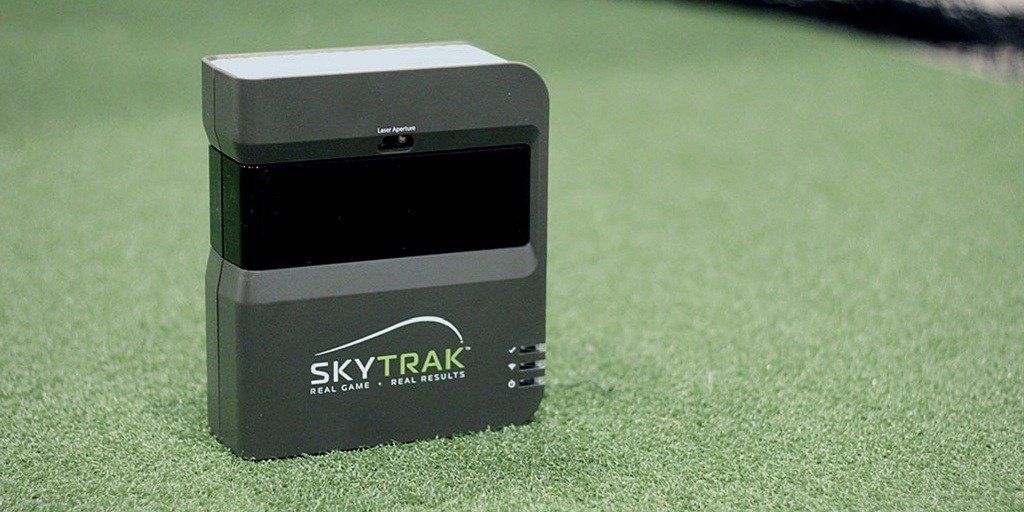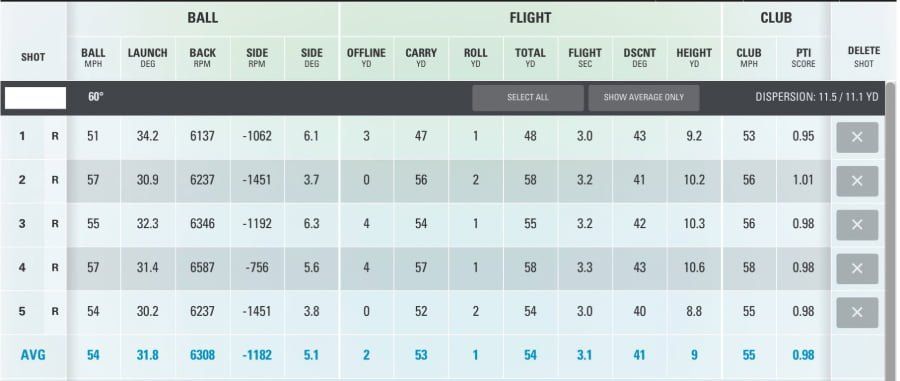
Your golf equipment can have a significant impact on how you perform on the course. If performance is important to you, then you don't want to make the game harder for yourself with equipment that doesn't suit your swing or is in poor condition. In this article, I want to explore how often you should change your wedges.
Unlike the other clubs in your bag, your wedges will typically wear down much faster, and there will be significant changes in performance on the course. While there are some generalized recommendations on how often you should upgrade your wedges, I'll share some information that can help you make a smarter decision. Additionally, I have some data from my SkyTrak launch monitor that shows what can happen if you wait a little too long to make the change.
How Long Do Wedges Last?
I've heard a lot of conflicting information on wedge durability. So I spoke to one of the top experts in the industry, Woody Lashen, to get the straight story. Woody is the co-owner of Pete's Golf Shop in Mineola, NY. They were once again recognized as one of the top custom fitters in the industry and golfers from all over the world trust them with their games (including yours truly).
The first question I asked Woody was how long a golfer could expect a wedge to last. Titleist has done tests with their Vokey wedges that suggest 75 rounds is when you will see a significant decline in performance. However, he believes there is no such thing as a set rule because there are so many variables. For starters, many wedges are not made from the same material. A cast wedge will last much longer than a forged one.
Additionally, the kinds of conditions a golfer plays will affect a wedge's lifespan. Sand will wear out the face more than pitch shots off the grass. If you happen to play a course with more bunkers, they will likely wear down quicker.
Another thing to consider is your practice. Players like myself who practice a lot with their 56 and 60-degree wedges can expect them to wear down significantly faster than those who don't. Woody said that Bubba Watson told him he never practices with the wedge he uses in competition to keep the grooves as fresh as possible.
So it's challenging to come up with an exact rule for every golfer because it depends on the material of the wedge, playing conditions, and practice frequency.
Where Will Performance Decline?
Woody told me that grooves on a wedge work like the tread on your car tires. You might not notice how worn down they are on a clean, dry street. But put water or debris on the road and look out.
Such is the case with wedge performance on the course. Worn out grooves lead to more inconsistency on imperfect lies. So if you have wet conditions or anything other than a perfect lie on the fairway, you are going to see considerable discrepancies in how much you can spin the ball. If you have a clean lie on the fairway, you likely can put a similar amount of spin on the ball because nothing is getting in between the grooves and the ball.
Long story short, the more worn out your grooves are, the less control you will have over the ball around the greens. You'll be making it harder to score with your wedges.
My Old Wedges
Just over three years ago I was fit for my Ping Glide wedges by Pete's Golf. While they performed very well for me after quite a bit of practice and play the first two years, I started to notice a difference in performance during the 2018 season. Shots weren't checking up as much as they used to from various lies. While I could stop the ball with full swings, I could tell that there wasn't as much zip on the ball.
Additionally, I started to notice my spin rates declining on my SkyTrak launch monitor. When I told Woody about this, he said this was a surefire sign that I had waited too long to change them out since I was hitting off a clean lie on a mat (oops).
So I was fit into a newer set of Ping Glides for my 56 and 60 degrees. My gap wedge didn't need to be replaced since I don't use it nearly as much.
During the fitting Woody noticed that I was delofting my wedges significantly, so we decided to go with a sand wedge that had a more effective bounce on it. You can read this article to learn more about why that is so important. Additionally, we went with a lie angle that was a little flatter, which is also extremely important for your wedges.
You can see a significant difference in the grooves between my old Sand Wedge and the newer one:

Woody told me that looking at the groove on the face is usually one of the best ways to diagnose whether or not you need new wedges. If they look worn out, they probably are.
Testing New vs. Old
I've played about eight rounds with my new Sand Wedge and Lob Wedge, and I can immediately tell the difference. The new grooves are allowing me to control my spin more around the greens, and I have even noticed it on my full swings as well.
I decided to see just how significant the difference is by examining the differences in spin rates on a clean lie. The results won't be as extreme as hitting out of the rough or with a wet lie, but I was curious anyway.
All testing was done indoors using my SkyTrak launch monitor. You can check out my full review here, but this is a great product that will deliver accurate ball flight metrics for a test like this. I've done several experiments on the site with it including this article on ball position, and this one comparing older equipment versus newer ones.

For the test, I hit shots from various distances with my 56- and 60-degree wedge. I was mostly looking for differences in spin rates, but also other parameters such as shot height and distance.
Here is an image of the data that SkyTrak presents:

Here is a summary of the changes I saw from my older wedges to my newer ones:
You can see there is a significant difference in spin rates. At almost every distance there is about 1,000 rpms less of spin with my older wedges. Again, this is off a clean lie on an artificial mat. That means if I am hitting on anything less than perfect lie on the course there are likely much larger discrepancies. The test confirmed what I had been noticing on the course the last season, and a good illustration of the kinds of changes you can see.
Wrapping It Up
Golfers can tend to upgrade equipment too often where it's unnecessary. For example, you don't need to buy a new driver every 18 months when the major club manufacturers entice you with their latest technology upgrades. However, the two clubs in your bag that you use the most around the greens might need an update that often.
So if you are serious about your equipment, and want to maintain peak performance, it might make sense to consider swapping out your wedges every 12-36 months depending on how often you play, practice, and the durability of the material. When in doubt, try to seek the services of an experienced clubfitter to get the straight story.
We care about the protection of your data Read our Privacy Policy